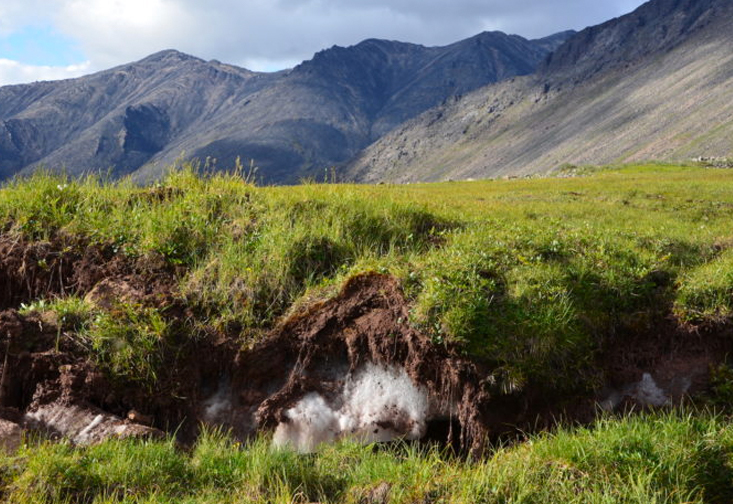The concentration of mercury in fish in Alaska’s Yukon River may exceed EPA mercury criterion by 2050 if greenhouse gas emissions are not constrained, according to a new scientific research paper co-authored by a professor at the University of South Florida’s St. Petersburg campus.
The new report, co-authored by USF Assistant Professor of Atmospheric Chemistry and Climate Change Yasin Elshorbany, estimates potential releases of mercury from thawing permafrost in high and low emissions scenarios. The paper predicts that by 2200, the mercury emitted into the atmosphere annually by thawing permafrost could compare with current global anthropogenic emissions under a high emissions scenario. Their results were published on September 16 in Nature Communications.
“If we can hit the Paris Accord target, we expect minimal impacts to mercury concentrations in fish and water. If we continue with unconstrained emissions, however, it is likely that we will see large increases in mercury concentrations,” said Kevin Schaefer, research scientist with the National Snow & Ice Data Center and lead author of the study. “What happens in the Arctic does not stay in the Arctic. The mercury emissions from thawing permafrost could persist for centuries, impacting the environment both locally and globally.”
The researchers have developed a model – which relies in part on data from the Moderate Resolution Imaging Spectroradiometer instrument aboard NASA’s Terra satellite – to predict how mercury emissions from thawing Arctic permafrost will change under different global emissions scenarios.
The paper characterizes the release of mercury from thawing permafrost for high and low emissions scenarios based on two of the four Representative Concentration Pathways (RCPs) from the Intergovernmental Panel on Climate Change’s Fifth Assessment Report. The high carbon emissions scenario (RCP 8.5) assumes unconstrained emissions, while the low carbon emissions scenario (RCP 4.5) assumes carbon emissions consistent with the Paris Agreement global target of less than 2 degrees Celsius of warming above pre-industrial levels.
The results indicate large increases to mercury concentrations in water and fish for the high emissions scenario and minimal impacts for the low emissions scenario. The high emissions scenario shows mercury releases to the atmosphere comparable to current anthropogenic emissions, with large increases to mercury concentrations in fish and water in the Yukon River. For the high emissions scenario, mercury concentrations could double in the Yukon River by 2100. For the low emissions scenario, mercury concentrations would likely increase by only about 14 percent and would not exceed EPA criterion by 2300.
This paper follows a previous novel study by an interdisciplinary team that included Elshorbany, Schaefer and others to evaluate the climate policy implications of the decline of Arctic land permafrost, snow and sea ice. The study calculated the economic costs – in the trillions – due to accelerated Arctic climate change under several mitigation scenarios, and has drawn global scientific and public attention to Arctic permafrost climate feedbacks.
“The Arctic is warming two times faster than the global average, demonstrated among others by permafrost degradation. The thaw of permafrost due to climate change releases not only carbon emissions but also mercury,” said Elshorbany. “We need to comply with the Paris Accord target of two degrees Celsius. Otherwise, under a high emissions scenario, a significant portion of mercury will be released to the environment and it will continue for hundreds of years.”
The Yukon River is the fifth largest drainage basin in North America and home to one of the world’s longest salmon runs. It serves as an important commercial and subsistence fishery.
The Atmospheric Chemistry and Climate Laboratory at USF lead by Elshorbany is leading several federal and internal grants addressing atmospheric chemistry and climate issues using state-of-the-art in-situ measurements, remote sensing and 3D modeling approaches. Recently, Elshorbany and his team were awarded a USF interdisciplinary grant to address COVID-19 impacts on air quality, health outcomes and society through a convergence interdisciplinary framework.
In addition to Elshorbany and Schaefer, the team of the study includes Elchin Jafarov of Los Alamos National Laboratory, Paul F. Schuster, Robert G. Striegl and Kimberly P. Wickland of the U.S. Geological Survey, and Elsie M. Sunderland of Harvard University.
